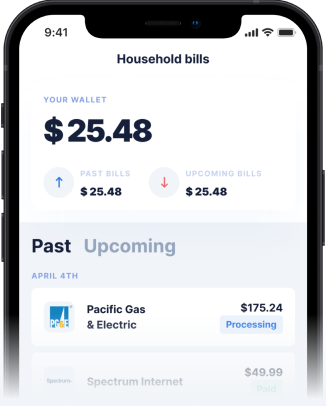Automating Your Personal Savings
Saving money is so much easier when you don’t have to think about it. But that’s rarely the case, is it? Usually, saving requires continuous thought and effort, which can make it difficult, especially when you have unexpected expenses or you receive a paycheck that’s smaller than you anticipated.
If you’re searching for a better way to save consistently each month, setting up an automatic savings plan is an excellent way to do it. Whether you’re saving for a vacation or a down payment on a house, or you’re just tired of sabotaging your savings goals, here’s how an automatic savings plan can help.
What Is an Automatic Savings Plan?
An automatic savings plan is a type of personal savings system where a certain amount of your money is automatically transferred directly to a savings account on a set schedule. That means you don’t have to lift a finger to save money.
One of the main perks of this type of savings plan is that the money hits your savings before you ever have a chance to spend it. It reduces the amount of self-discipline that’s required to save, eliminates excuses for not setting money aside, and helps you stick to your goals. Not to mention, if you’re not constantly thinking about how much you’re saving each month or week, you almost forget about it and you’re able to grow your savings much faster than you ever anticipated. In fact, by the time you finally take a peek at your account, you might be surprised to see how much it has grown!
How Does It Work?
If an automatic savings plan sounds too good to be true, it’s not! It’s actually very easy to set up, and once the setup is done, it does all the hard work for you.
First, you’ll need to set up an automatic transfer so a set percentage or dollar amount of your paycheck automatically moves into your savings account. You can choose how frequently the transfer occurs (weekly, bi-weekly, or monthly) depending on what works best for you and your family.
Whether you have a savings account with the bank where you currently have your checking account or you have a savings account with a separate financial institution, you can set up your automatic transfers to deposit into either one.
Determining how much money to automatically transfer to a savings account can be tricky, especially if you don’t have a budget. If you’re unsure, the best strategy is to start with a budget. Once you figure out how much of your income goes to paying bills and other regular expenses, you’ll be able to see what's left and how much flexibility you have for saving.
Schedule Recurring Deposits
How you schedule your recurring deposits to your savings account will vary depending on your circumstances and preferences. If your employer pays you via direct deposit, you can have a percentage or dollar amount of each check automatically transferred to your savings account or individual retirement account (IRA). Or if you have a checking and savings account with the same bank, you can link the two accounts and set up a recurring transfer to regularly move money into your savings account.
Alternatively, you can schedule recurring transfers to a savings account at another financial institution. To link your checking account to an external savings account and schedule recurring deposits, you’ll need the name of the bank, its location, the routing number, and your account number.
If you need help setting up recurring deposits to your savings account, refer to your financial institution’s online help or support center or contact your bank directly. A banker or customer service specialist can help you get everything set up the way you want it.
More Tips to Boost Your Savings
It’s no secret: Most of us can use all the help we can get to save! Setting aside money has never been easy, but there are several strategies you can implement to boost your savings and grow your wealth.
Set Money Goals
If you’re not sure what you’re saving for, it can be difficult to find the motivation to get serious and do it. On the other hand, if you have a clear and prioritized list of money goals, you’re much more likely to be motivated and organized in your saving endeavors.
To get started, ask yourself what you want right now in life. Do you want to buy a house? Are you tired of living paycheck to paycheck? Do you want to go on that vacation you’ve been dreaming of for years? Whatever it is that you want, write down your goals and rank them by priority. Having a clear list will help you determine how much you should set aside each month, how long it will take you to reach your goals, and how you can work to achieve multiple financial goals at the same time.
Use a High-Yield Savings Account
A high-yield savings account is a type of savings account that has a better annual percentage yield (APY) than the national average. That means you’ll increase the amount of money you’re able to save each year. For example, if you have $3,000 in a savings account with a 0.10% APY, you’d earn $3 over a year. On the other hand, if you have $3,000 in a high-yield savings account earning 2% APY, you’d earn $60 over a year, which is a significant difference!
Generally, online banks offer the best rates, but you can easily set up automatic savings transfers from your checking account to a high-yield savings account, even if they’re held at different financial institutions. If you’re used to having both your checking and savings account at the same bank, this might seem strange initially, but you’ll find that transferring money is very fast and easy with online banking tools.
While you’re shopping for a high-yield savings account, also consider other factors like interest rates, minimum balance requirements, initial deposit requirements, and any other account fees to maximize your savings potential. And make sure that any online bank or credit union you use is insured by the Federal Deposit Insurance Corporation (FDIC) or National Credit Union Administration (NCUA), so you’ll be protected in the event of bank failure or theft.
Look for Minimal Fees
Typical monthly savings accounts have fees that can sneak up on you if you don’t read the fine print. Most have a monthly maintenance fee, an excessive withdrawal fee (for withdrawing too many times within a set period), and incidental fees. You can avoid some fees if you meet certain criteria, such as maintaining a minimum dollar amount in your account each month.
If you want to maximize the interest your money earns, it’s best to avoid as many of those fees as possible. So before you sign up for a new savings account, be sure to read the fine print to ensure that you are fully aware of all the potential monthly charges you may incur.
Review Your Budget
Boosting your savings doesn’t always require major financial changes. Sometimes it can be as easy as reviewing your budget to identify areas where you can cut back. For example, let’s say you spend $500 per month on eating out. If you want to allocate some of those funds to your monthly savings instead, you could cook at home more often and only eat out two or three times a month.
More than likely, your discretionary spending can be cut down, even if it means making a few sacrifices here or there. In the end, it just comes down to your priorities and self-discipline. If you can live with things like dining out less, finding free entertainment, and avoiding impulse buying, you’ll naturally have more money left over to set aside in your savings account.
Withdraw Only When Necessary
Sometimes, you have an unexpected expense or emergency that you need to pay for. If you don’t have enough money in your checking account to cover it, you may need to pull from your savings. While these things happen every once in a blue moon, you should try your best not to withdraw money from your savings account.
Instead, it’s ideal to have a buffer in your checking account, meaning that you have more than you need to cover bills, and you can use your buffer money to pay for any unexpected expenses. Or you can set up a separate savings account to fund small emergencies but reserve your primary savings account for your short-term or long-term savings goals.
Save From Every Paycheck
It’s all too easy to spend all of your paycheck and then pinch pennies for the last day or two before you get paid again. But if you operate that way all the time, you’ll never have the funds to allocate to savings. One of the main requirements to grow your savings is consistency.
On the flipside, automatically transferring a set dollar amount to your savings from every paycheck you get ensures that there’s always enough money to save. In essence, once you save a portion of your paycheck, you’ll only have what’s left to work with. That way, you don’t risk accidentally spending it or procrastinating until that money is gone from your account.
Manage Financial Windfalls Wisely
Being smart about how you handle a windfall could have a huge impact on your finances! It’s a good idea to set the money aside in a savings account while you decide what you want to do with it. However, if you have any high-interest debt (like credit card debt), it’s a wise idea to use that money to pay it off.
Otherwise, you may want to talk to a financial planner about how to use the money to invest, save for retirement or your children's college funds, or pursue certain life or career goals you may have. Just make sure to set aside a portion of your windfall for taxes so you don’t get blindsided at tax time.
Learn More With Gerald
Saving money is a strategic endeavor that takes commitment and self-discipline, but almost anyone can do it. Gerald makes creating an automatic savings plan easier than ever with our convenient features including automatic bill pay and our money management tool and personal budgeting feature.
Sign up for Gerald, a convenient buy now pay later app, and start boosting your savings account right away. and start boosting your savings account right away.


